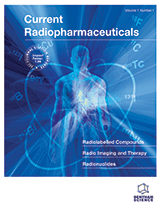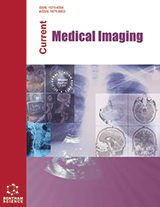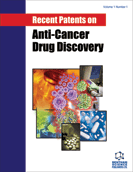Abstract
In this paper, we give an overview of articles on non-choline tracers for PET/CT for patients with prostate cancer and planning of radiotherapy guided by PET/CT. Nineteen articles described 11C-Acetate PET/CT. Of 629 patients 483 (77%, 95% CI 74% - 80%) had positive 11C-Acetate PET/CT scans. Five articles described 18F-FACBC PET/CT. Of 174 patients, 127 (73%, 95% CI 68% - 78%) had positive scans. Both tracers detected local lesions, lesions in regional lymph nodes, and distant organs. Ten articles described 18F-NaF PET/CT and found that 1289 of 3918 patients (33%) had positive reactive lesions in bones. PET/CT scan can guide external beam radiotherapy (EBRT) planning for patients with loco-regional prostate cancer. In six studies with 178 patients with localized prostate cancer, PET/CT pointed out dominant intraprostatic lesions (DIL). Oncologists gave EBRT to the whole prostate and a simultaneously integrated boost to the DIL. Four studies with 254 patients described planning of EBRT for patients with PETpositive lymph nodes. After the EBRT, 15 of 29 node-positive patients remained in remission for median 28 months (range 14 to 50 months). Most articles describe 11C- and 18F-Choline PET/CT. However, 11C-Acetate and 18F-FACBC may also be useful tracers for PET/CT. Planning of radiotherapy guided by MRI or PET/CT is an investigational method for localized prostate cancer. Current clinical controlled trials evaluate whether the method improves overall survival.
Keywords: Androgen deprivation therapy, computed tomography, external bam radiotherapy, positron emission tomography, prostate cancer, radiopharmaceuticals, radiotherapy planning.
Graphical Abstract
Current Radiopharmaceuticals
Title:Planning of External Beam Radiotherapy for Prostate Cancer Guided by PET/CT
Volume: 8 Issue: 1
Author(s): Finn Edler von Eyben, Kalevi Kairemo, Timo Kiljunen and Timo Joensuu
Affiliation:
Keywords: Androgen deprivation therapy, computed tomography, external bam radiotherapy, positron emission tomography, prostate cancer, radiopharmaceuticals, radiotherapy planning.
Abstract: In this paper, we give an overview of articles on non-choline tracers for PET/CT for patients with prostate cancer and planning of radiotherapy guided by PET/CT. Nineteen articles described 11C-Acetate PET/CT. Of 629 patients 483 (77%, 95% CI 74% - 80%) had positive 11C-Acetate PET/CT scans. Five articles described 18F-FACBC PET/CT. Of 174 patients, 127 (73%, 95% CI 68% - 78%) had positive scans. Both tracers detected local lesions, lesions in regional lymph nodes, and distant organs. Ten articles described 18F-NaF PET/CT and found that 1289 of 3918 patients (33%) had positive reactive lesions in bones. PET/CT scan can guide external beam radiotherapy (EBRT) planning for patients with loco-regional prostate cancer. In six studies with 178 patients with localized prostate cancer, PET/CT pointed out dominant intraprostatic lesions (DIL). Oncologists gave EBRT to the whole prostate and a simultaneously integrated boost to the DIL. Four studies with 254 patients described planning of EBRT for patients with PETpositive lymph nodes. After the EBRT, 15 of 29 node-positive patients remained in remission for median 28 months (range 14 to 50 months). Most articles describe 11C- and 18F-Choline PET/CT. However, 11C-Acetate and 18F-FACBC may also be useful tracers for PET/CT. Planning of radiotherapy guided by MRI or PET/CT is an investigational method for localized prostate cancer. Current clinical controlled trials evaluate whether the method improves overall survival.
Export Options
About this article
Cite this article as:
von Eyben Finn Edler, Kairemo Kalevi, Kiljunen Timo and Joensuu Timo, Planning of External Beam Radiotherapy for Prostate Cancer Guided by PET/CT, Current Radiopharmaceuticals 2015; 8 (1) . https://dx.doi.org/10.2174/1874471008666150316222203
| DOI https://dx.doi.org/10.2174/1874471008666150316222203 |
Print ISSN 1874-4710 |
| Publisher Name Bentham Science Publisher |
Online ISSN 1874-4729 |
 50
50 2
2
- Author Guidelines
- Bentham Author Support Services (BASS)
- Graphical Abstracts
- Fabricating and Stating False Information
- Research Misconduct
- Post Publication Discussions and Corrections
- Publishing Ethics and Rectitude
- Increase Visibility of Your Article
- Archiving Policies
- Peer Review Workflow
- Order Your Article Before Print
- Promote Your Article
- Manuscript Transfer Facility
- Editorial Policies
- Allegations from Whistleblowers
Related Articles
-
Scaffold-based Drug Delivery for Cartilage Tissue Regeneration
Current Pharmaceutical Design Y-shaped Folic Acid-Conjugated PEG-PCL Copolymeric Micelles for Delivery of Curcumin
Anti-Cancer Agents in Medicinal Chemistry Potential Roles of Eosinophils in Cancer Therapy: Epidemiological Studies, Experimental Models, and Clinical Pathology
Recent Patents on Anti-Cancer Drug Discovery New Generation of Oncolytic Herpes Virus
Current Cancer Therapy Reviews Stress Related Neuroendocrine Influences in Ovarian Cancer
Current Cancer Therapy Reviews Computational Studies in Drug Design Against Cancer
Anti-Cancer Agents in Medicinal Chemistry Endocrine Therapy for Advanced Breast Cancer: Beyond Tamoxifen and Aromatase Inhibitors
Current Cancer Therapy Reviews Thalidomide Analogues as Anticancer Drugs
Recent Patents on Anti-Cancer Drug Discovery Negative Glucocorticoid Receptor Response Elements and their Role in Glucocorticoid Action
Current Pharmaceutical Design Compounds From Celastraceae Targeting Cancer Pathways and Their Potential Application in Head and Neck Squamous Cell Carcinoma: A Review
Current Genomics Development of Dry Powder Inhalers
Recent Patents on Drug Delivery & Formulation The Cone Beam O-Arm Imaging System: Radiation Dose, Image Quality, and Clinical Applications
Recent Patents on Medical Imaging Anti-Inflammatory Approaches that Target the Chemokine Network
Recent Patents on Inflammation & Allergy Drug Discovery TGF-beta Signaling in Cancer Treatment
Current Pharmaceutical Design Plasminogen Activation-Based Thrombolysis for Ischaemic Stroke: The Diversity of Targets may Demand New Approaches
Current Drug Targets Topical Delivery of Antioxidants
Current Drug Delivery CXCL12-CXCR4 Axis in Angiogenesis, Metastasis and Stem Cell Mobilization
Current Pharmaceutical Design Potent Phosphatidylinositol 3-Kinase Inhibitors and Their Biology
Current Drug Discovery Technologies 17α-Hydroxylase/17,20-Lyase (P450 ) Inhibitors in the Treatment of Prostate Cancer: A Review
Anti-Cancer Agents in Medicinal Chemistry Potassium Channels are a New Target Field in Anticancer Drug Design
Recent Patents on Anti-Cancer Drug Discovery






















